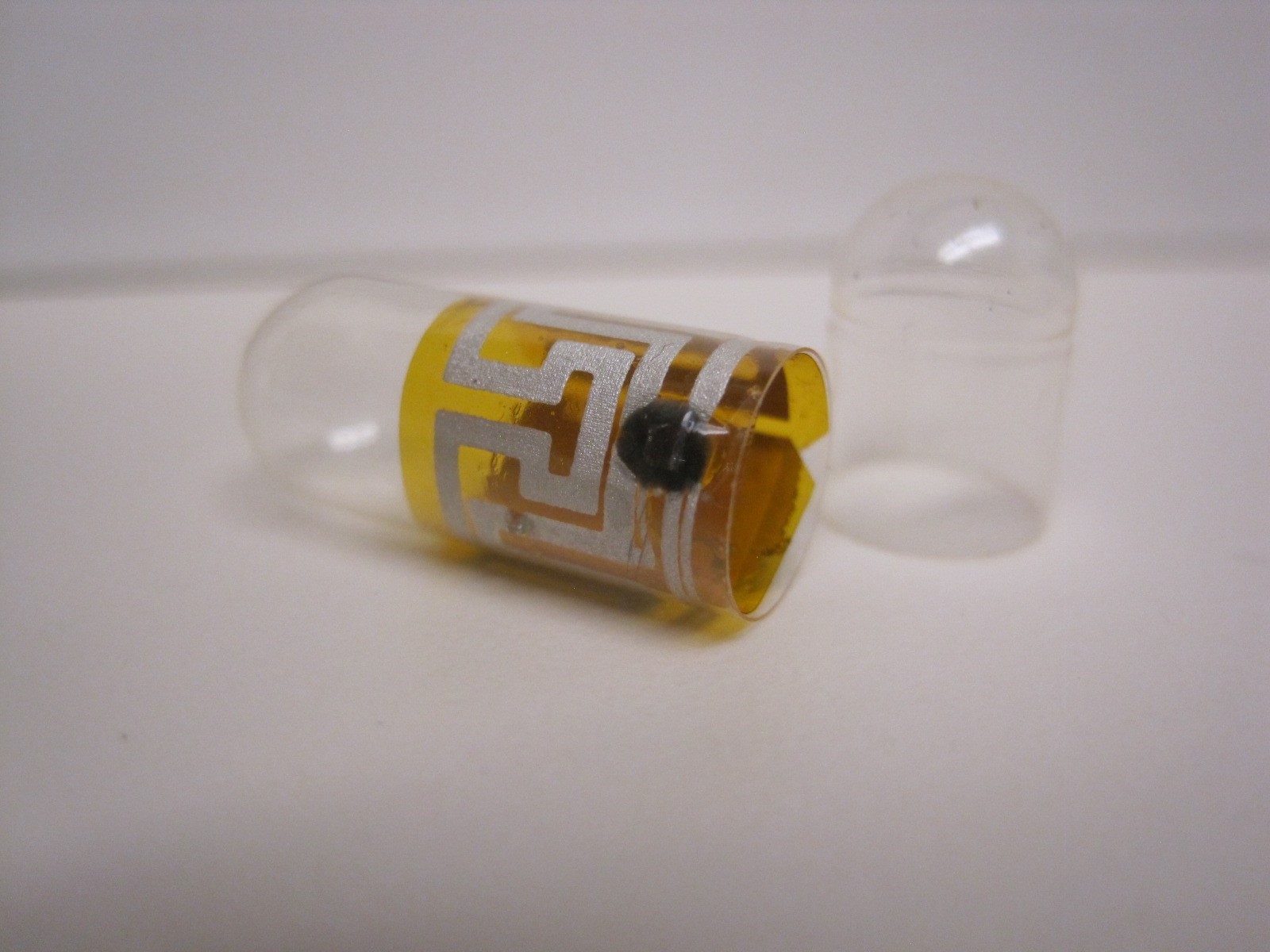Digital Pills Track How Patients Use Opioids

New pill capsules that send a message to a smartphone as they move through the GI tract have emerged as a way to track whether patients are taking their medicine as prescribed. The problem of nonadherence to medication instructions causes about 125,000 deaths a year and at least 10 percent of hospitalizations, according to one estimate.
Soon the ingestible tracking technology could also be used to make sure patients aren’t taking too many of drugs like opioids, which are highly addictive. Researchers at one Boston hospital think the high-tech pills could help physicians prescribe the right amount of opioids, helping patients avoid taking more than they need.
As the opioid epidemic in the U.S. grows, Edward Boyer and Peter Chai, emergency medical physicians and medical toxicologists at Brigham and Women’s Hospital, wanted to find out how patients take opioids when they’re prescribed them for the first time.
Chai says being able to detect a pattern in how patients are taking pills can help physicians intervene if there’s a change in that pattern: if patients are taking more pills, for example, or taking them before they go to bed at night, the most dangerous time to take opioids.
They partnered with EtectRx, a company based in Newberry, Florida, that’s developing an ingestible gel capsule with a wireless sensor. The gel capsule fits over regular pills; when swallowed, it’s dissolved by digestive acids in the stomach and emits a radio signal that’s picked up by a small device worn around the neck. The reader detects the message sent from the pill and forwards it to a physician’s smartphone app via Bluetooth.
Boyer and Chai tried out the technology on 15 patients who were admitted to the emergency room at Brigham and Women’s for bone fractures and were prescribed oxycodone, a type of opioid. The technology records how many pills each patient takes and how often they take them. If a patient takes too many of the opioids because pain is persisting, a doctor can intervene.
The first pill equipped with a sensor was approved by the U.S. Food and Drug Administration in November for Abilify, an antipsychotic drug used to treat schizophrenia and bipolar disorder. These patients often do not take their medication regularly, which can have severe side effects.
Right now, the technology is still a bit clunky. The digital pill that pairs with Abilify requires that patients wear a patch on their torso when they take their medicine. The technology developed by EtectRx uses an electronic reader about the size of an iPod, worn around the neck. But the company is working on boosting the pill’s signal strength.
“We would hope that one day the reader would become integrated into wearables that people use every day—think the watch band of the Apple Watch, or the case of your smartphone,” Chai says. “That would really allow the reader to start to meld into the everyday life of patients.”
Challenges remain. Not all patients will want to be tracked, and if they do agree, they’ll want to know how their personal data is being used.
Boyer and Chai have interviewed emergency room patients who use heroin and asked if they would be willing to use the technology. About 83 percent said they would. Next, they are testing the technology in chronic pain patients who have been taking opioids on a long-term basis.
Larissa Mooney, director of the UCLA Addiction Medicine Clinic, says she can understand why the technology is exciting, but she’s not convinced yet that digital pills could be used to prevent or treat addiction.
“This will only work if people agree to and consent to being monitored. Somebody who doesn’t want to have their every dose recorded could refuse this medicine, so there are always going to be limitations,” she says.
There’s also a lot of variability in people’s needs for opioid pain medication, she says, so these pills would need to be tested in more patients with different types of pain.
Keep Reading
Most Popular
Large language models can do jaw-dropping things. But nobody knows exactly why.
And that's a problem. Figuring it out is one of the biggest scientific puzzles of our time and a crucial step towards controlling more powerful future models.
The problem with plug-in hybrids? Their drivers.
Plug-in hybrids are often sold as a transition to EVs, but new data from Europe shows we’re still underestimating the emissions they produce.
Google DeepMind’s new generative model makes Super Mario–like games from scratch
Genie learns how to control games by watching hours and hours of video. It could help train next-gen robots too.
How scientists traced a mysterious covid case back to six toilets
When wastewater surveillance turns into a hunt for a single infected individual, the ethics get tricky.
Stay connected
Get the latest updates from
MIT Technology Review
Discover special offers, top stories, upcoming events, and more.